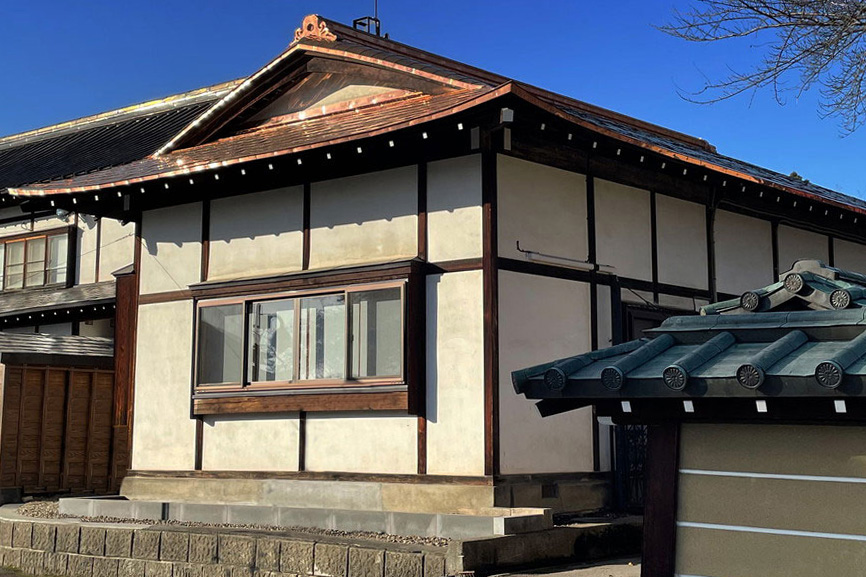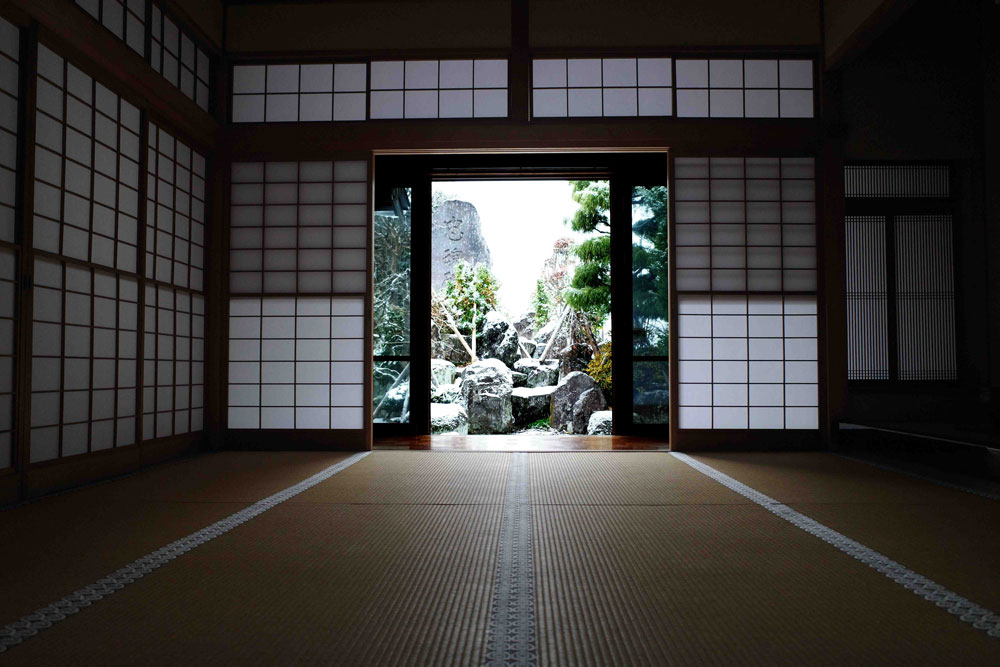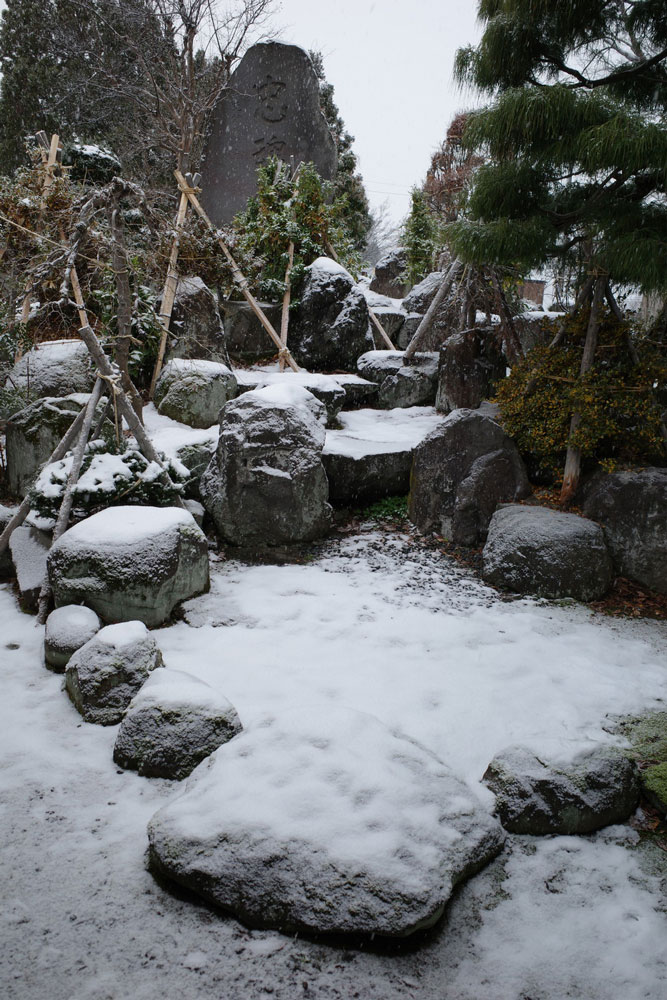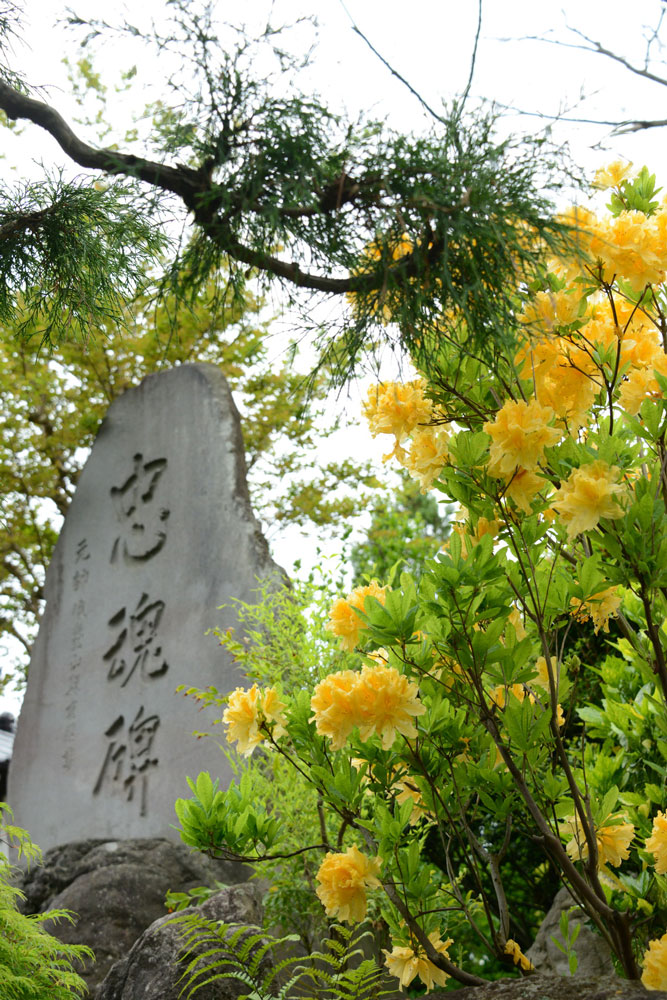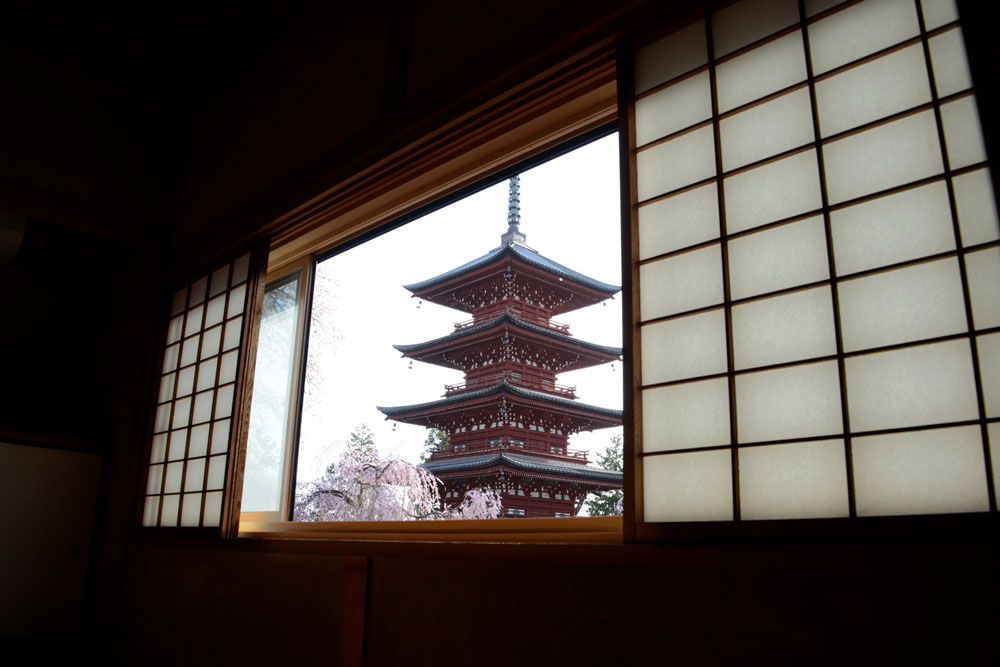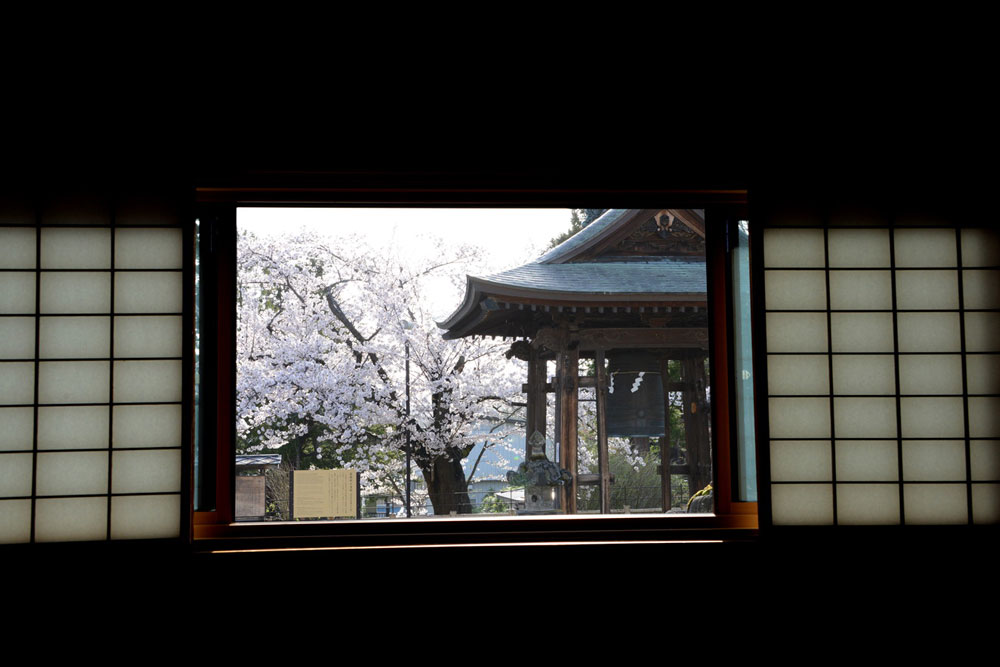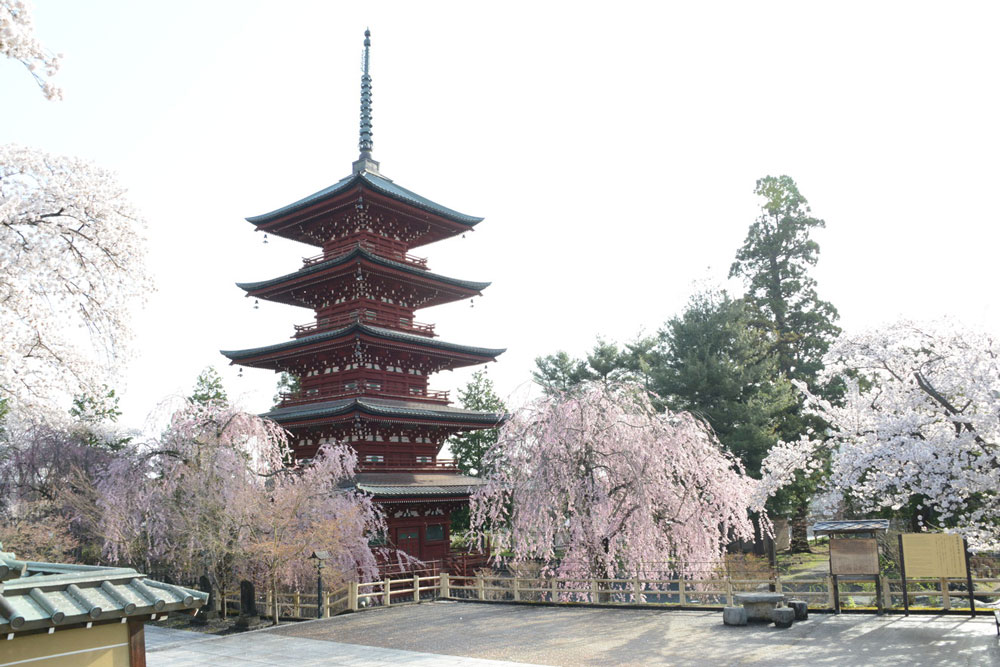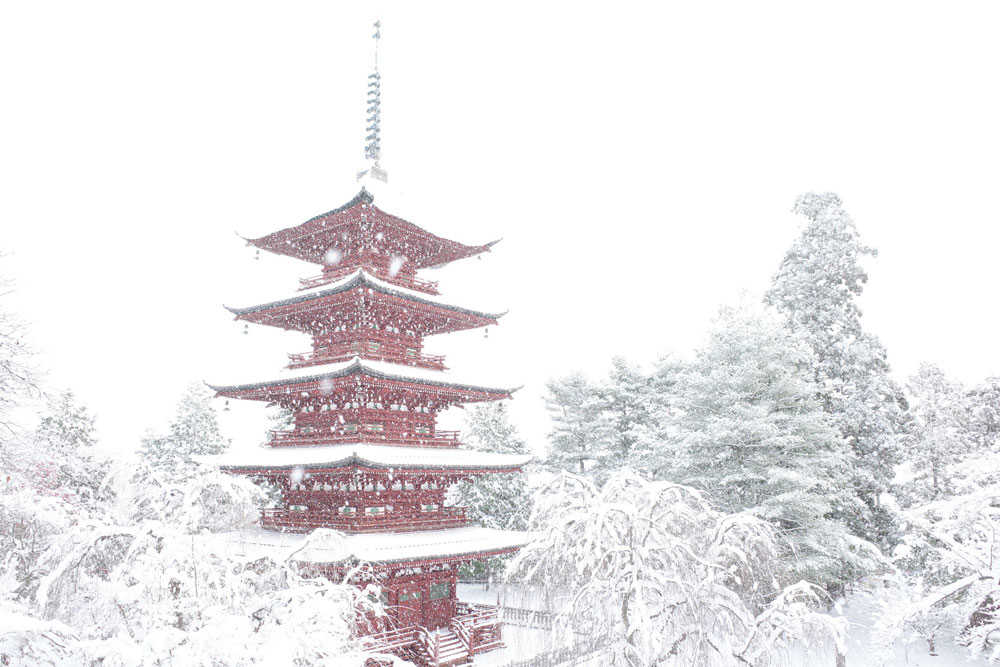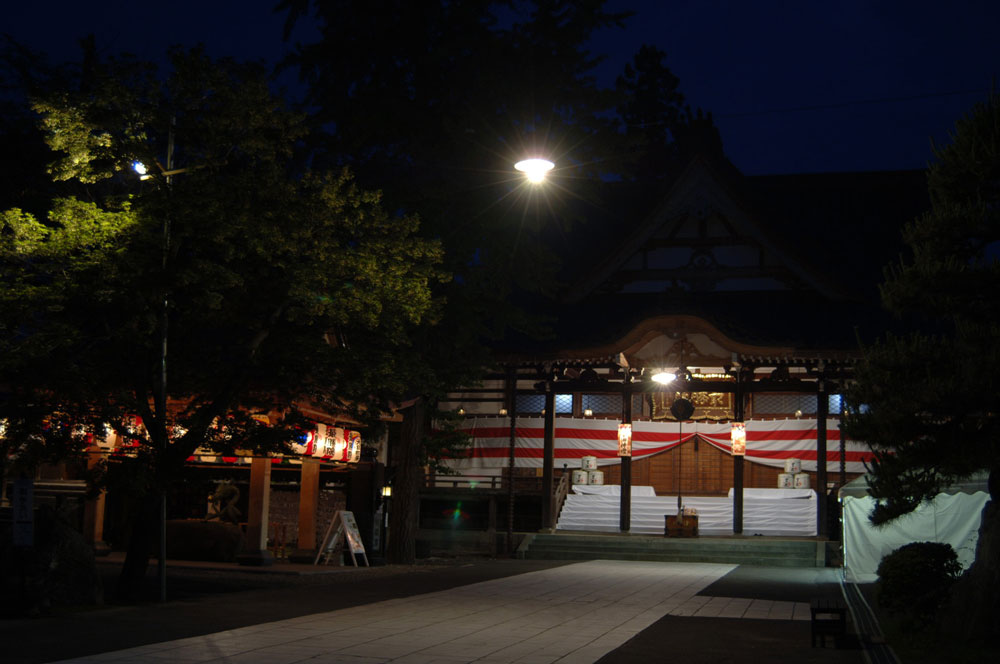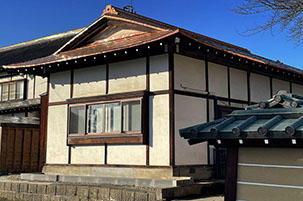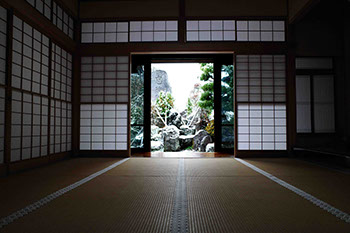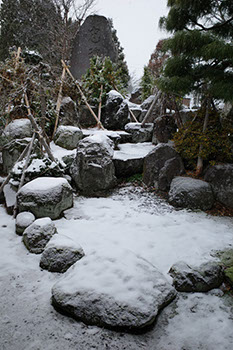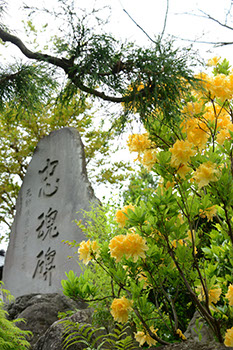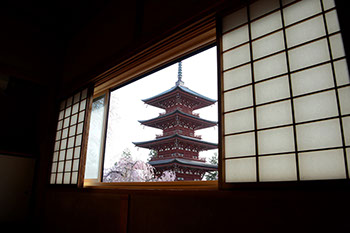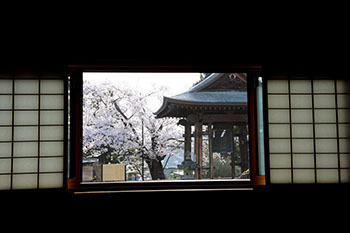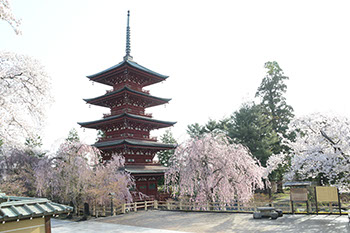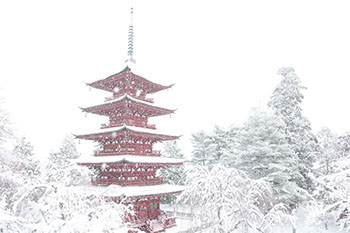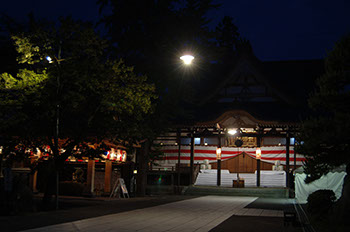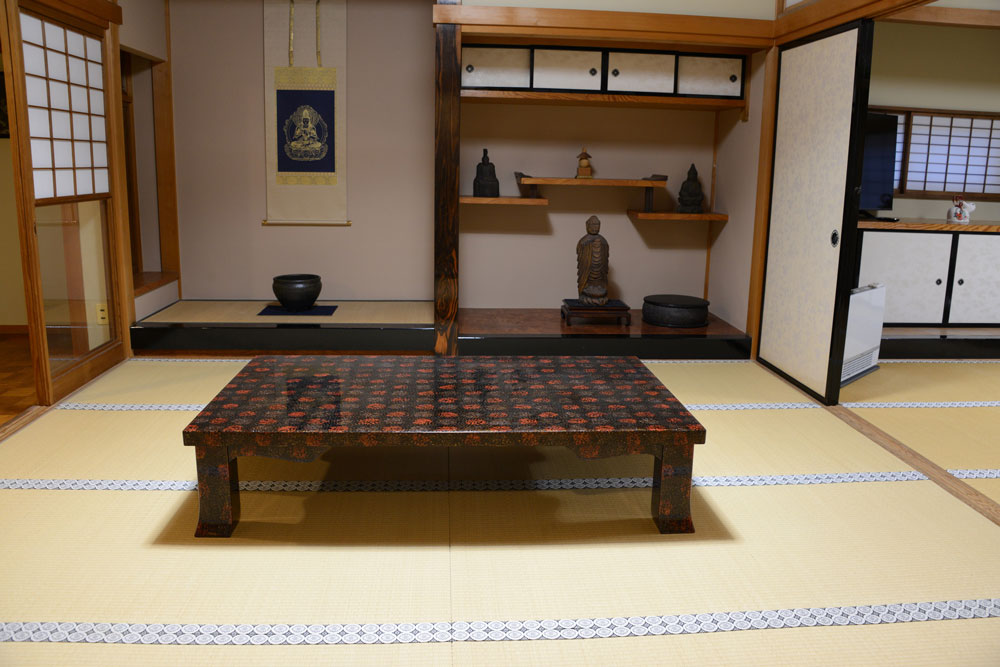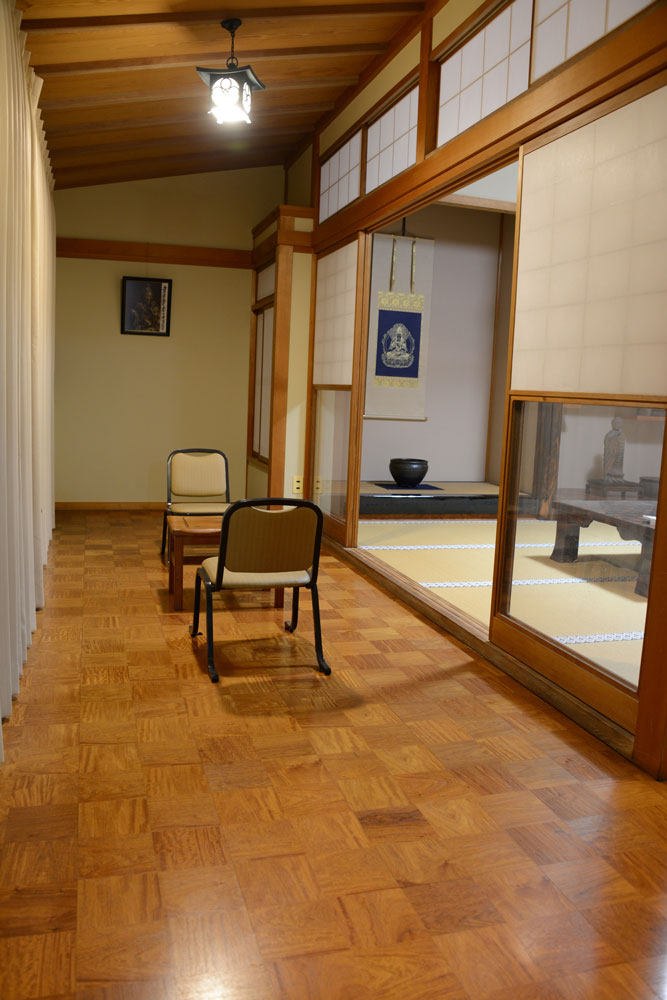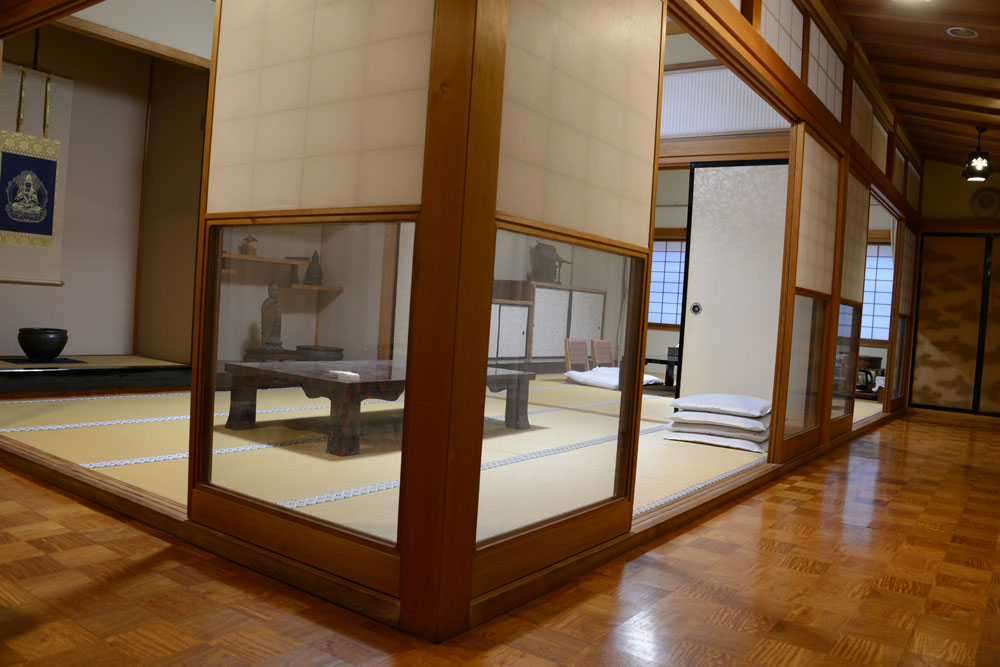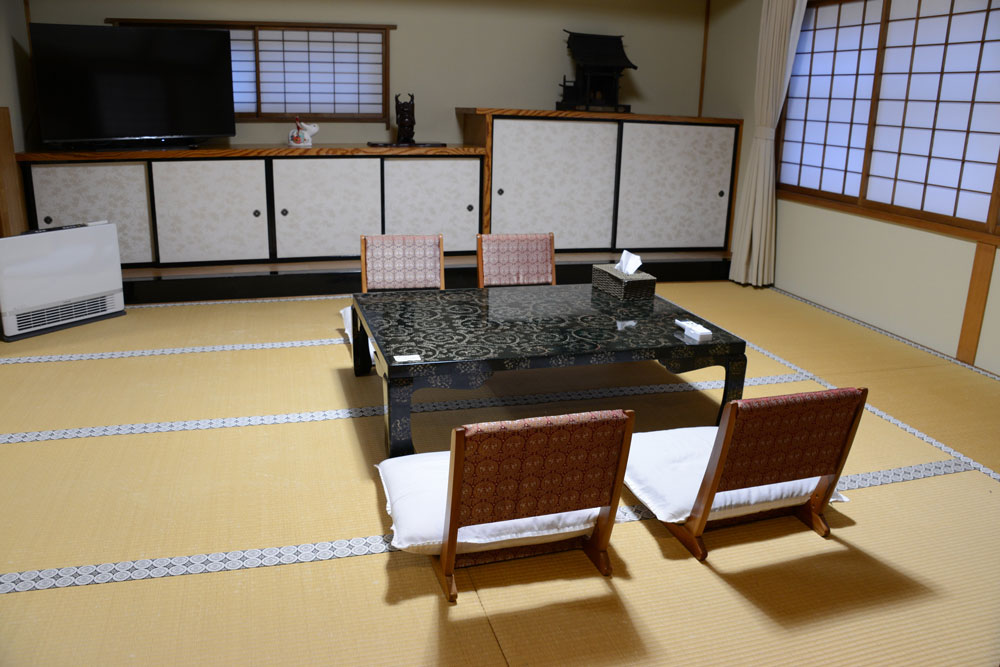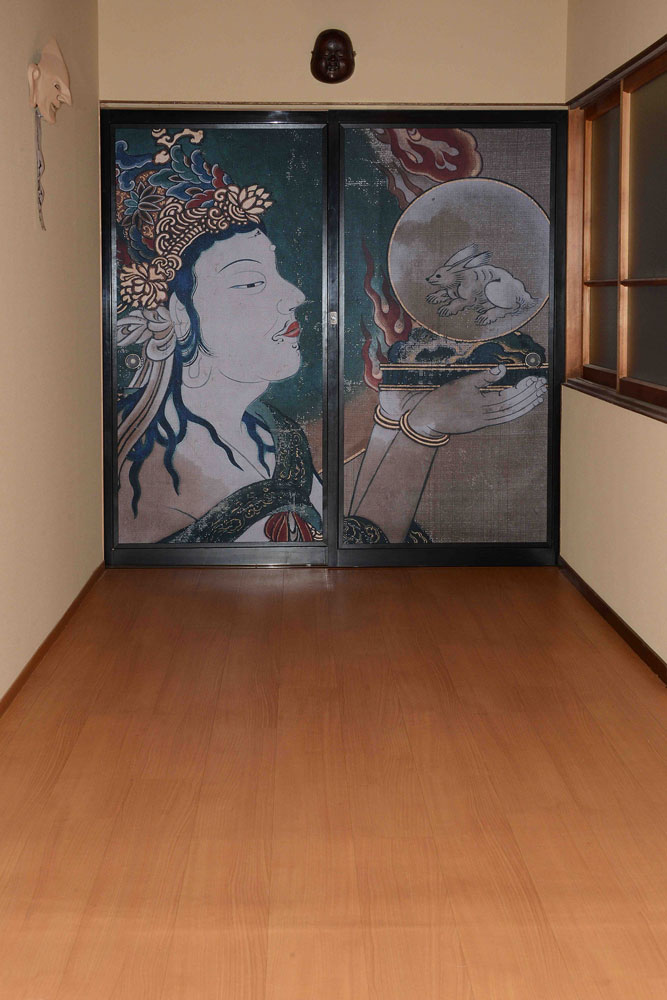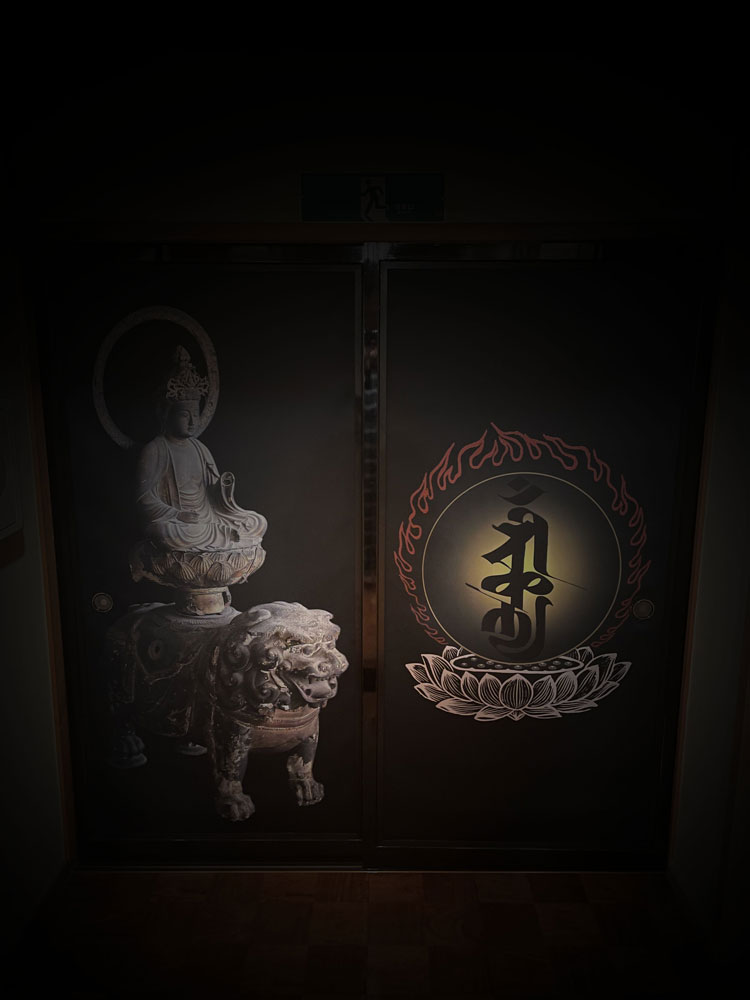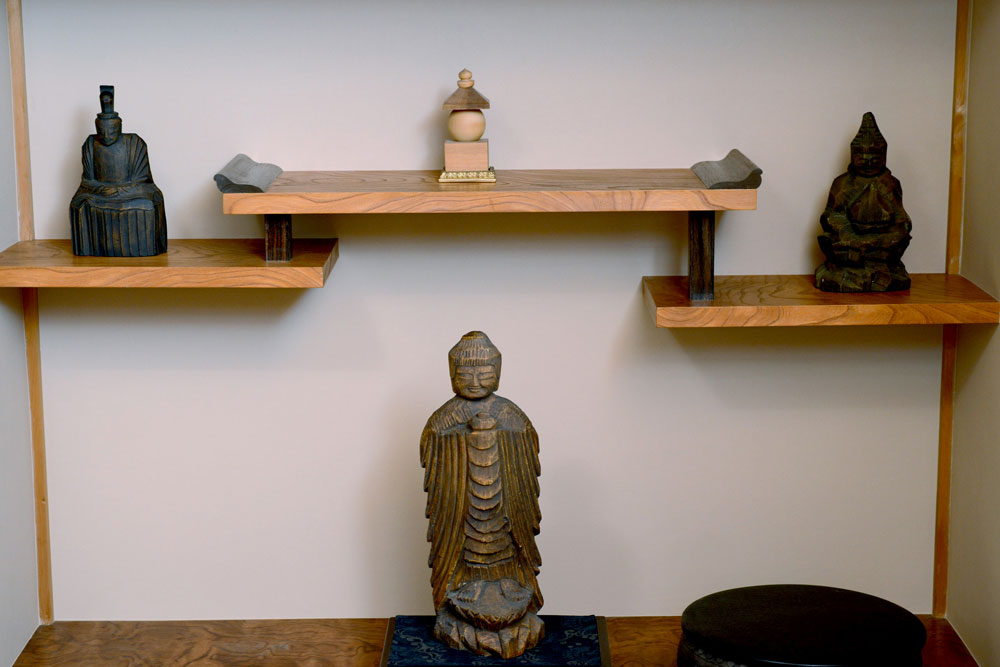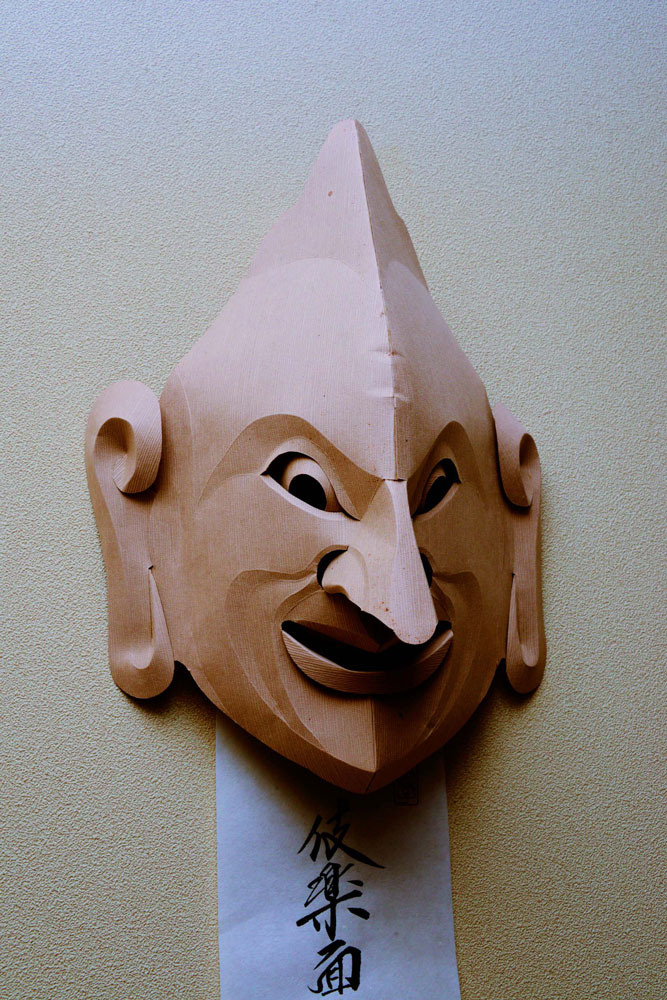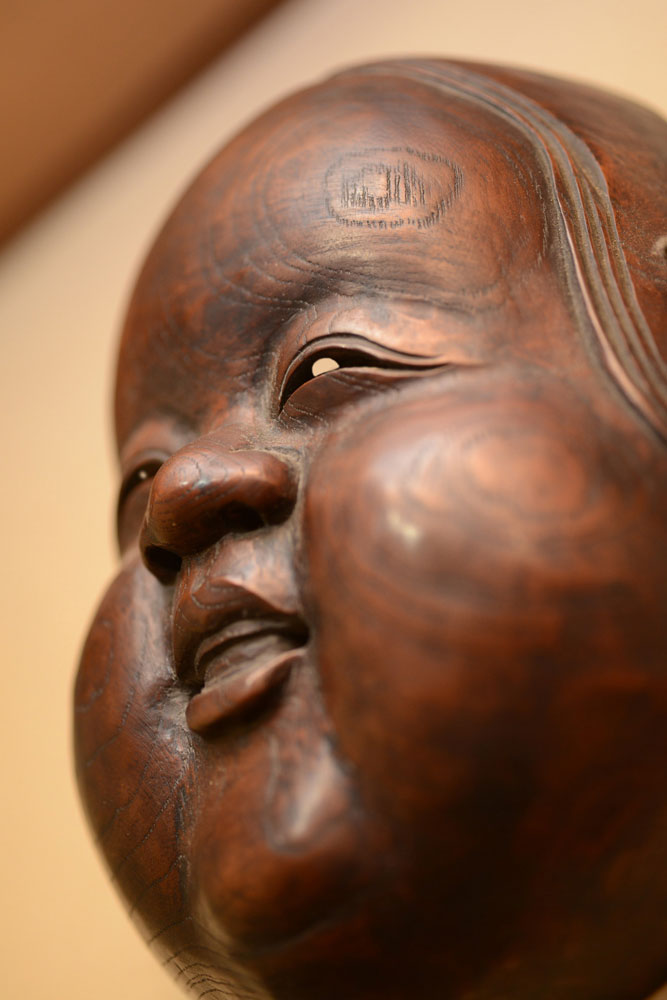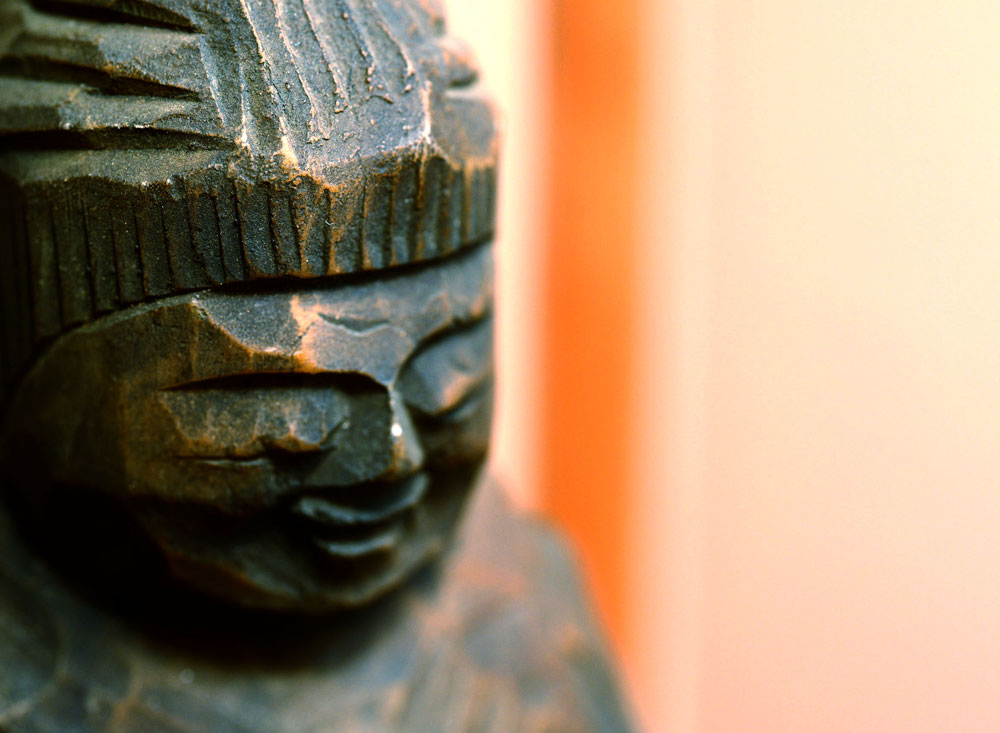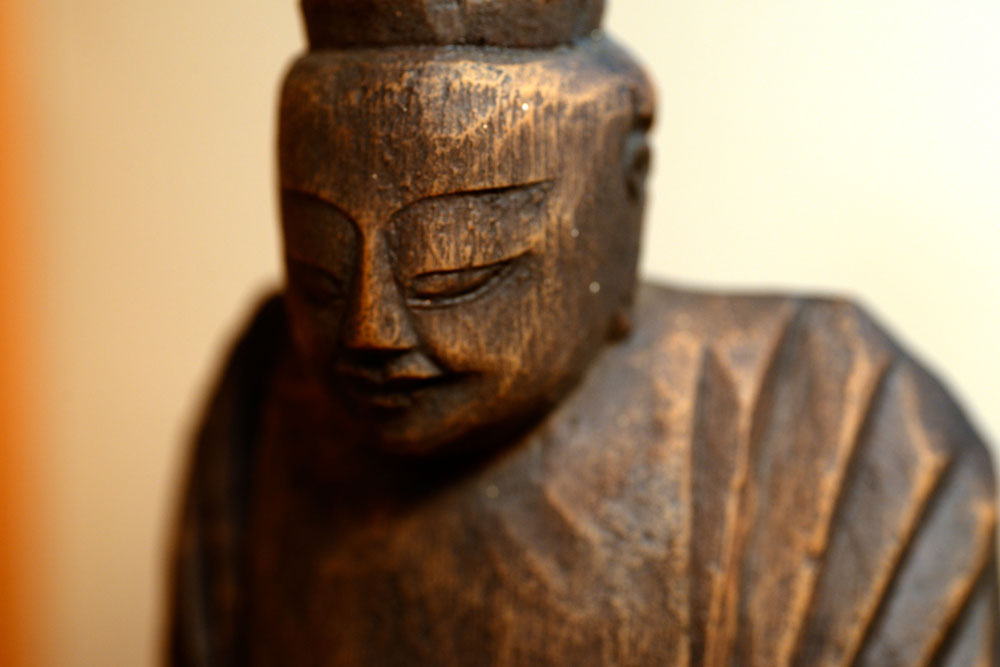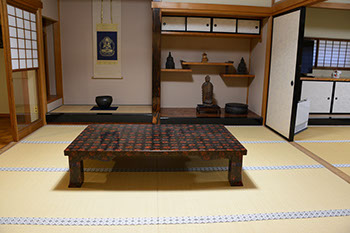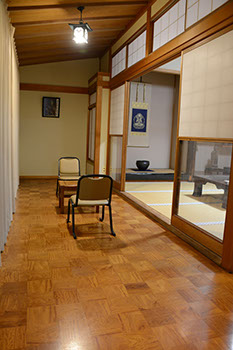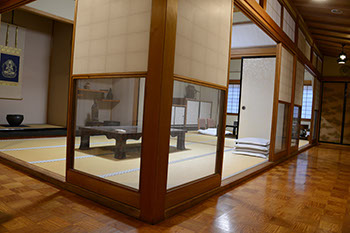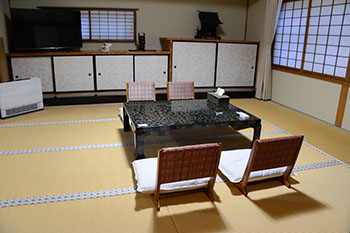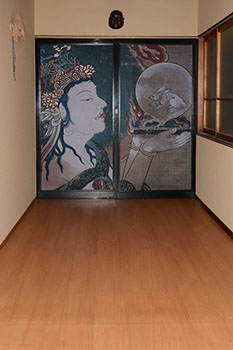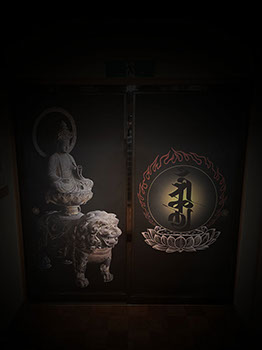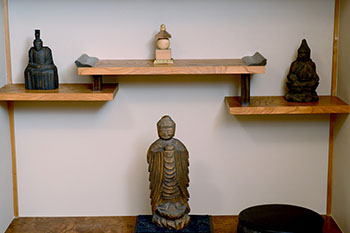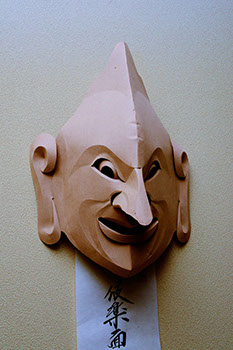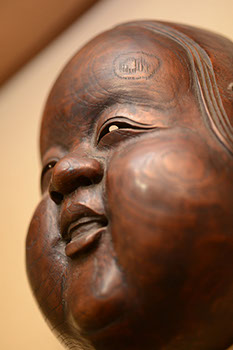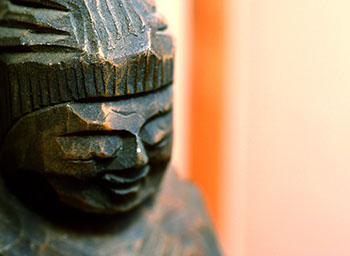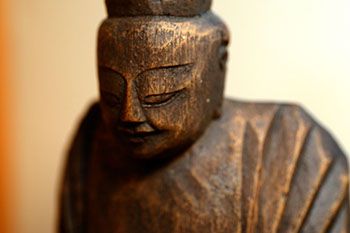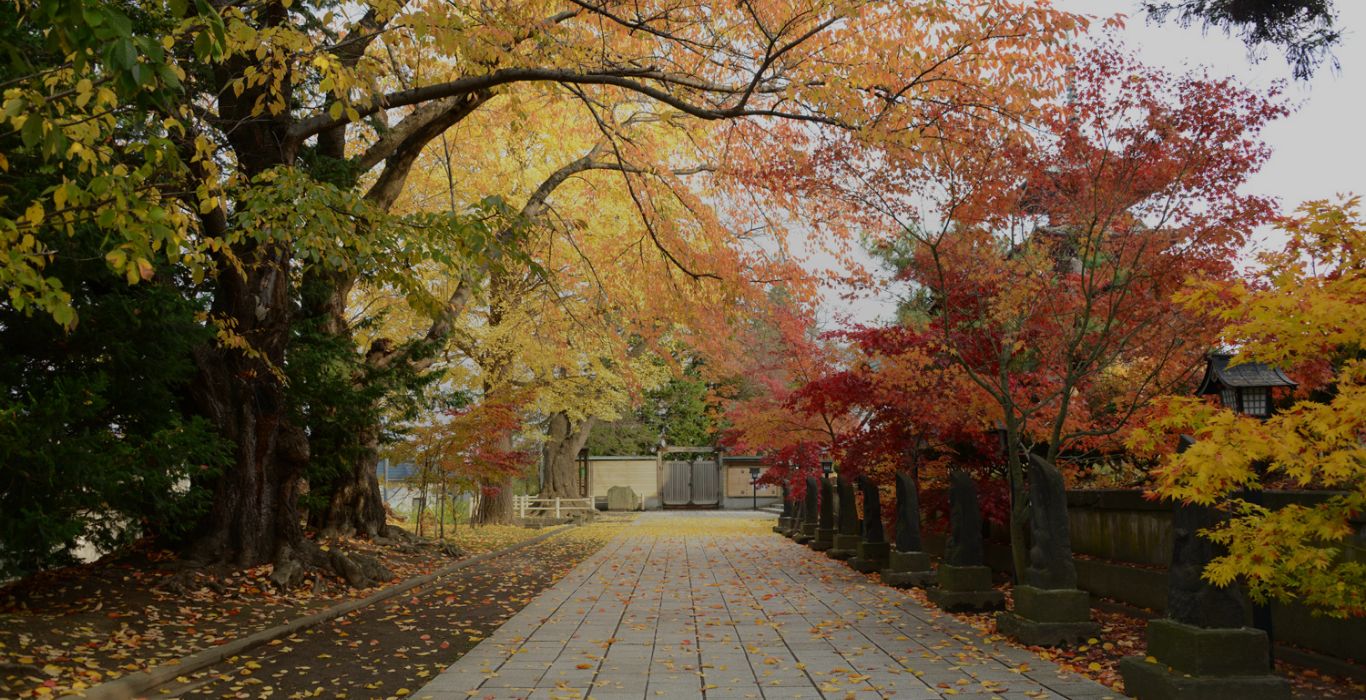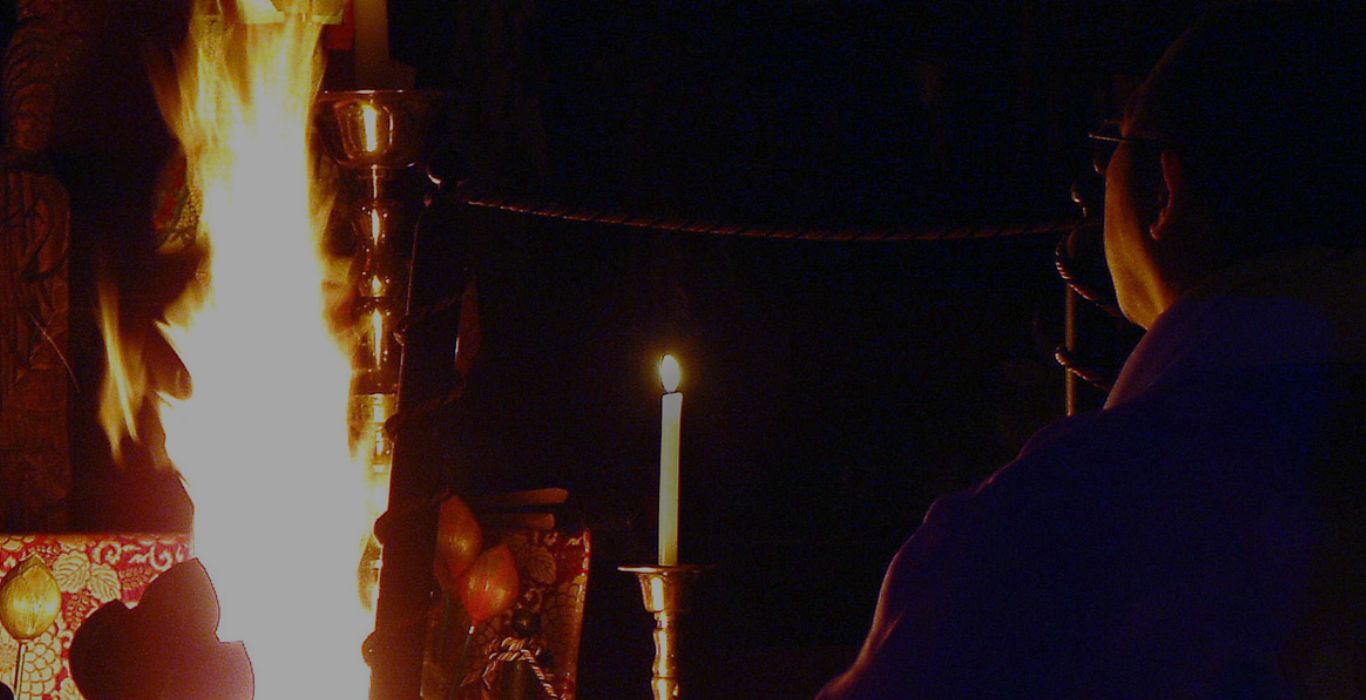About Temple Lodging
In the old days, temples where worshippers could stay overnight were called shukubo.
Saishoin Temple offers lodging that accommodates not only worshippers but also visitors to the temple.
The building where guests stay is called "Shinden.” It is a small but luxurious room with a private bath and toilet. Originally, the shinden was built to accommodate high priests visiting Saishoin Temple from the main temple in Kyoto.
The window facing the sando, or the path for worshippers to visit shrines and temples, offers a magnificent view of the Five-Storied Pagoda, an important cultural asset, which has been praised as "the most beautiful pagoda in Tohoku region." The historic bell tower can be seen in front of the temple, and the sound of the bell brings a sense of relaxation. Come and enjoy the cherry blossoms and fresh greenery in spring, deep greenery in summer, fiery autumn leaves in fall, and pure white snow in winter. These peaceful moments offer the ultimate healing experience.
Guest Room
The guest room is a calm Japanese-style room with a tokonoma alcove and a shelf with two shelves hung at different angles from the left and right sides. The fittings are fitted with sliding yukimi shoji, a door made with a lattice frame covered with translucent paper with the lower half made of glass, which allows the view of the snowy garden from inside the room in winter.
Optional Experiences
We offer Optional Experiences for those who wish to stay at the temple.
Meditation “Gachirinkan”
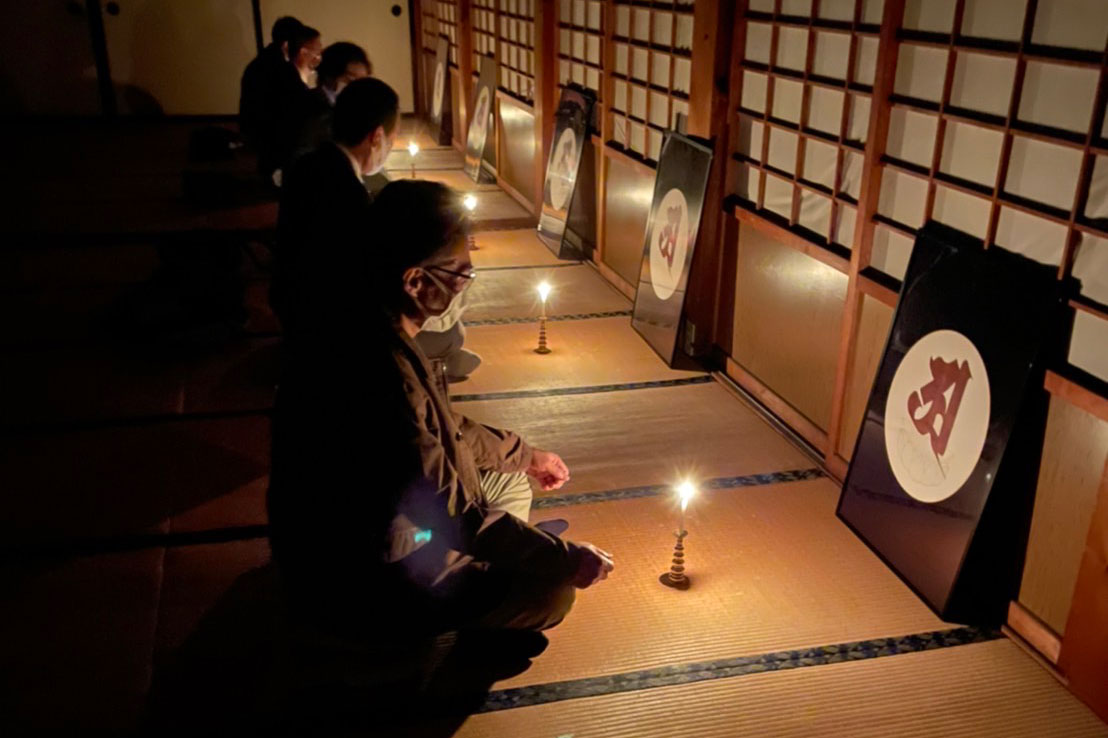
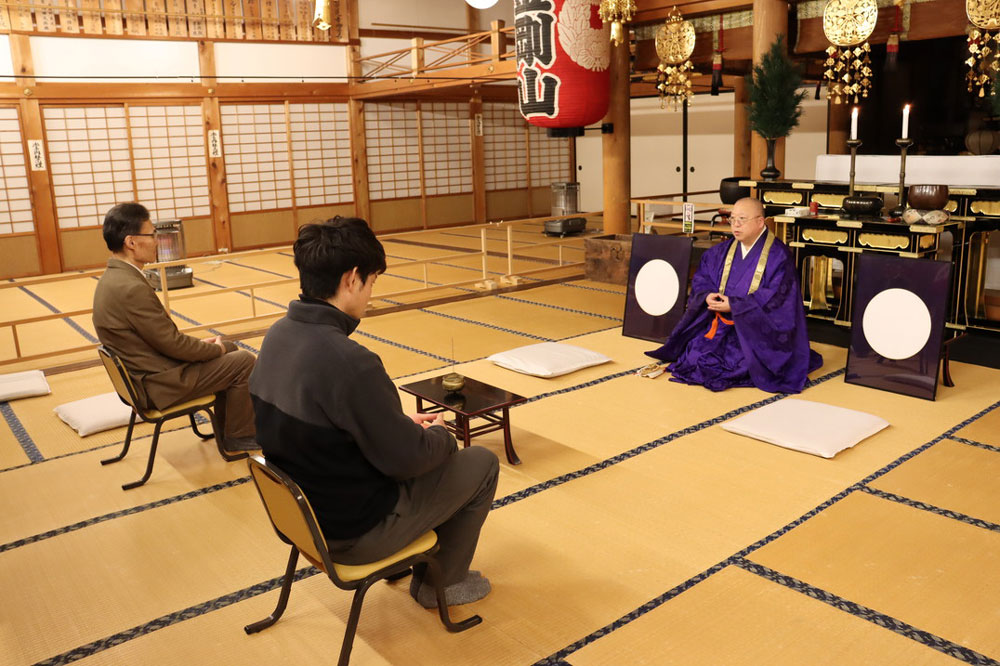
The Gachirinkan meditation method is a basic form of the Ajikan meditation method practiced by the Shingon sect of Buddhism since ancient times. By practicing this meditation, your soul, which has been locked up until now, will be released and you will be able to have a moment of repose.
Goma-ku Kigan
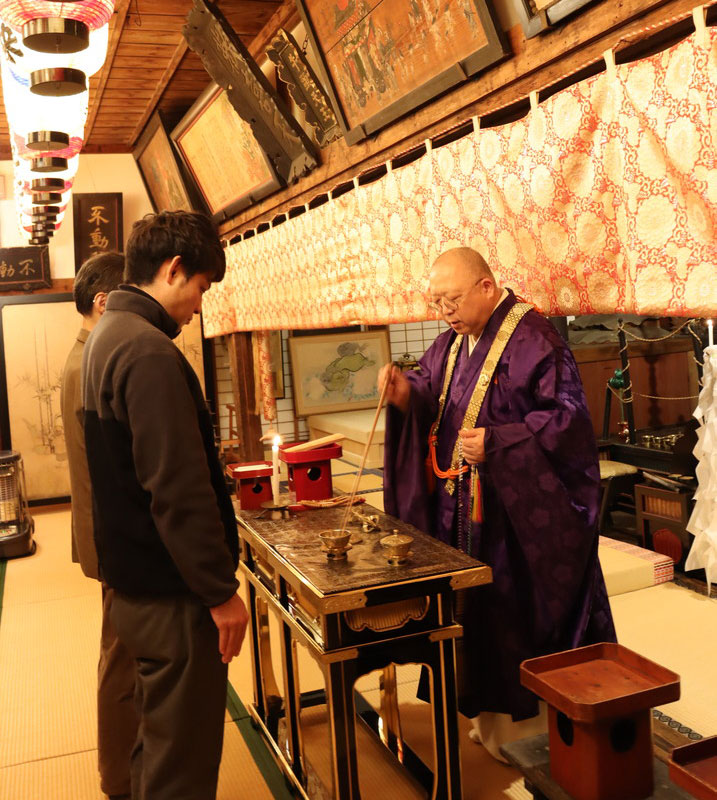
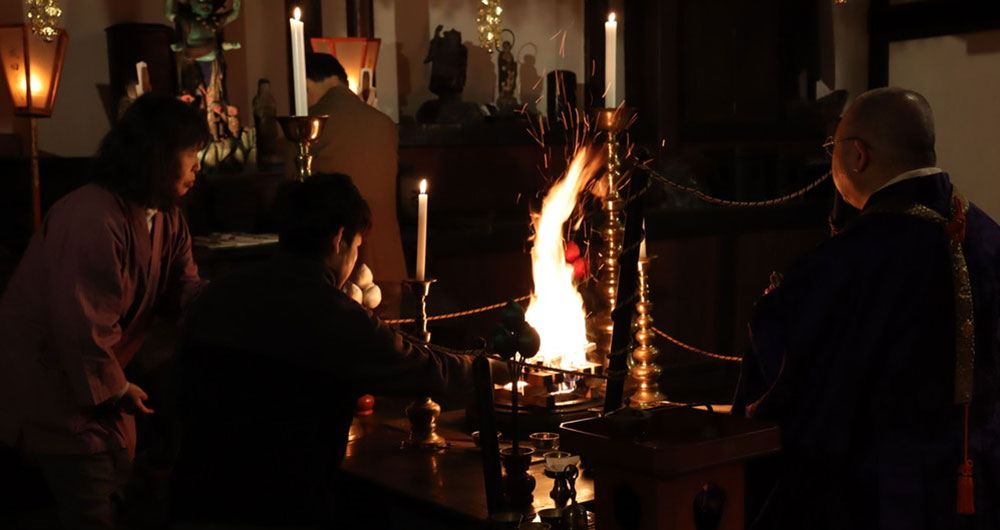
Goma is an ancient Indian fire ritual with strong magical elements called "homa" that was adopted in Shingon Esoteric Buddhism. The Esoteric Shingon sect was introduced to Japan about 1,200 years ago by Kobo-Daishi Kukai, the founder of the Shingon sect, as the legitimate successor to Esoteric Buddhism, from Keikawajo (a Chinese Esoteric Buddhist monk and teacher of Kukai) in Chang'an (now Xi'an), China. The ritual has been handed down to the present day without any change.
While experiencing this goma, participants put their hands together in the hope that their wishes will come true. Everyone has a wish. Why not pray and wish for your unfulfilled hopes and wishes at Saishoin Temple?
Special viewing of the interior
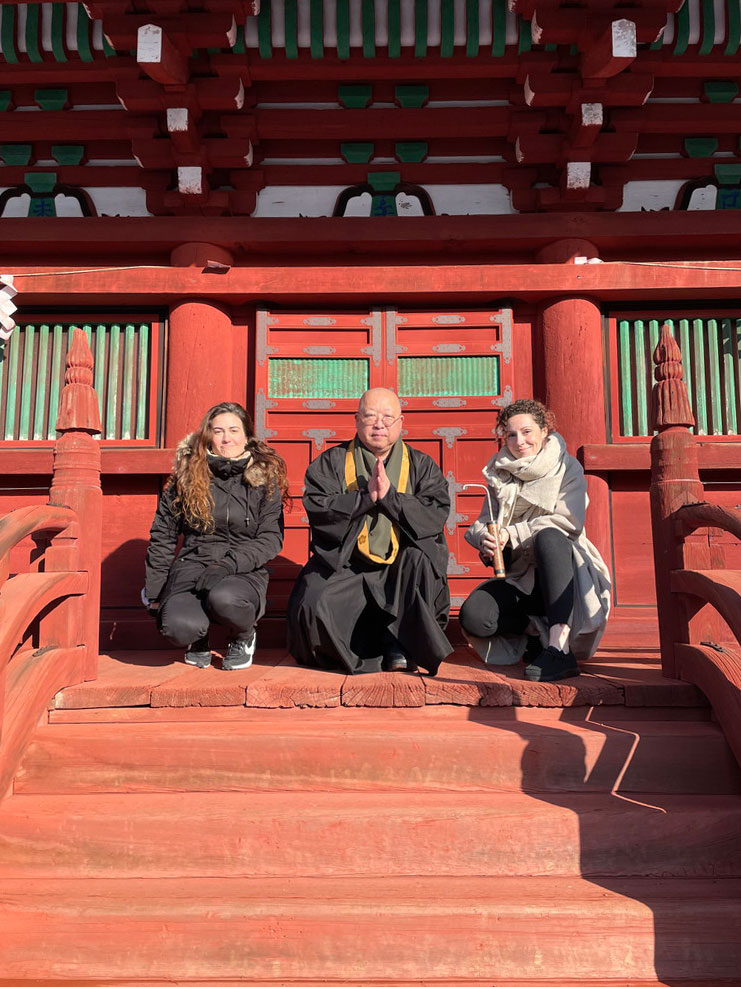
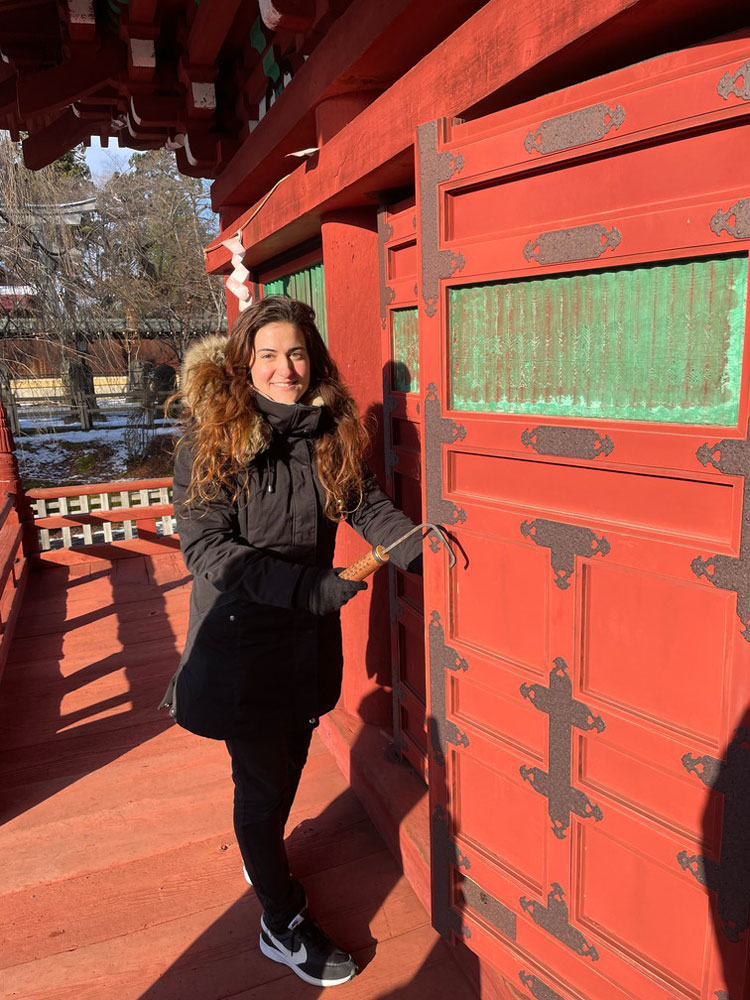
In addition, a special viewing of the interior of the Five-Storied Pagoda, Rokkakudo hall and Gochi-nyoraido is offered to lodging guests only. Normally, the interior of the Five-Storied Pagoda is closed to the public, while the others are open to the public once a year. Please see the "Notice" for more information.
*Public viewing is not allowed during the winter months due to snow. The following is the period during which Saishoin Temple is open to the public for special viewing.
Special Exhibition Period: April 1 - November 30.



